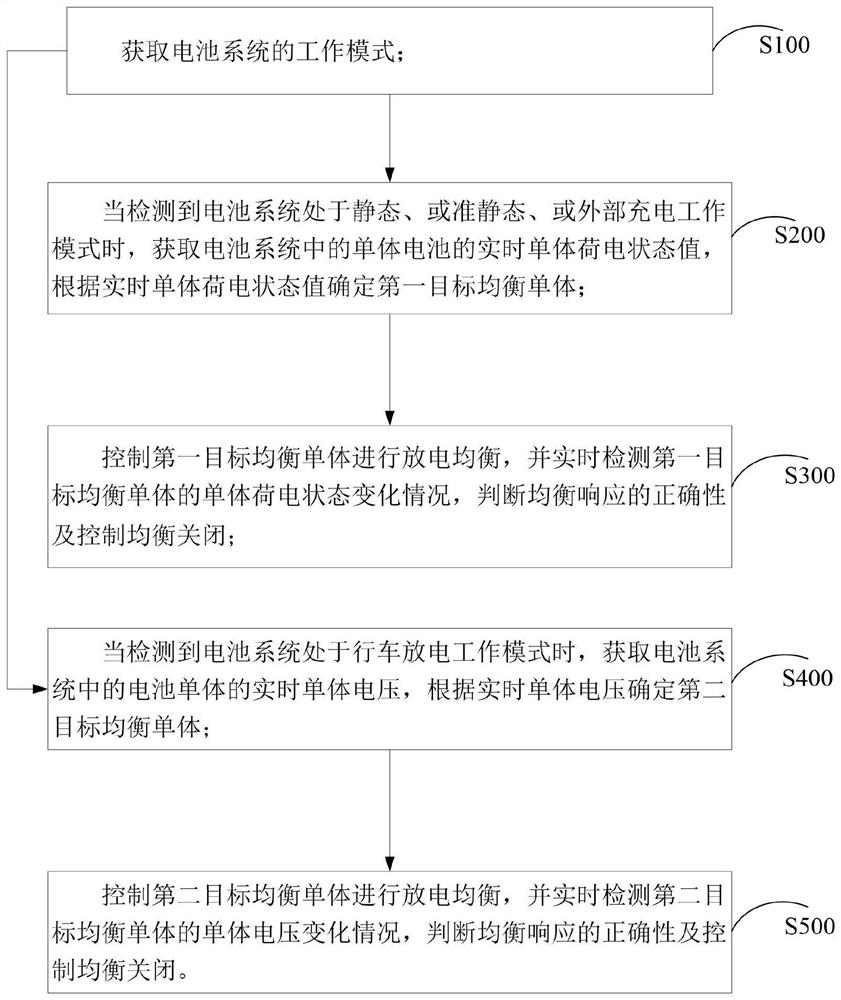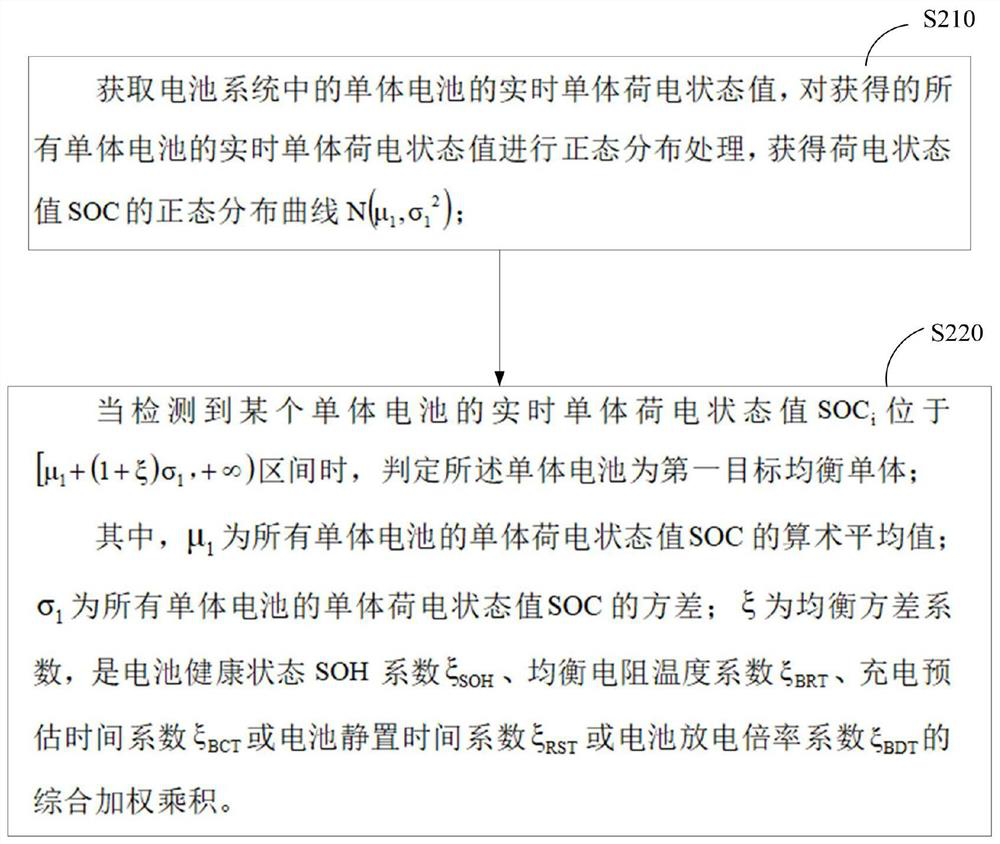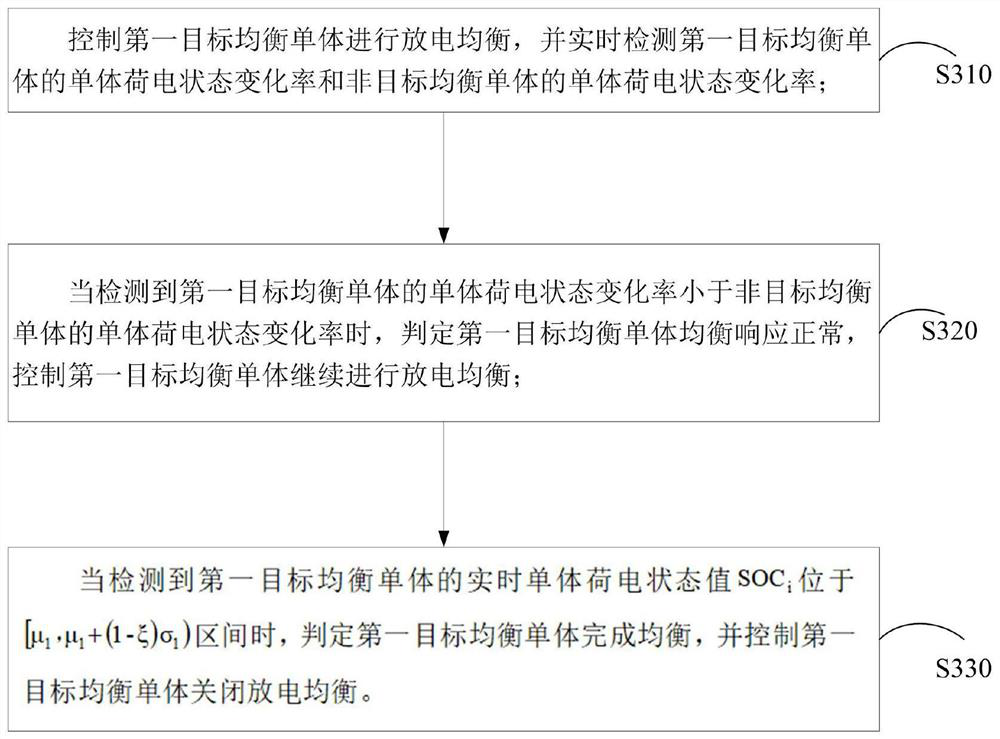Passive equalization control method and system of electric vehicle battery management system
A battery management system, passive equalization technology, applied in electric vehicles, battery/fuel cell control devices, vehicle energy storage, etc., can solve the problems of reduced equalization efficiency, low accuracy and precision, unreasonable opening and closing of equalization, etc. To achieve the effect of ensuring high balance efficiency, accuracy and precision
- Summary
- Abstract
- Description
- Claims
- Application Information
AI Technical Summary
Problems solved by technology
Method used
Image
Examples
Embodiment Construction
[0057] The examples of the present invention will now be explained in detail in the drawings. Although the present invention will be described in connection with the specific embodiments, it will be understood that the present invention will be not intended to limit the invention. Instead, it is desirable to override changes, modifications, and equivalents included in the spirit and scope of the invention. It should be noted that the method steps described herein can be implemented by any functional block or functional arrangement, and any function block or functional arrangement can be implemented as a physical entity or a logic entity, or a combination of both.
[0058] The present invention will be better understood by those skilled in the art, and the present invention will be further described in detail below with reference to the accompanying drawings and embodiments.
[0059] Note: The examples to be described are only a specific example, and not to limit the embodiments of...
PUM
 Login to View More
Login to View More Abstract
Description
Claims
Application Information
 Login to View More
Login to View More - R&D
- Intellectual Property
- Life Sciences
- Materials
- Tech Scout
- Unparalleled Data Quality
- Higher Quality Content
- 60% Fewer Hallucinations
Browse by: Latest US Patents, China's latest patents, Technical Efficacy Thesaurus, Application Domain, Technology Topic, Popular Technical Reports.
© 2025 PatSnap. All rights reserved.Legal|Privacy policy|Modern Slavery Act Transparency Statement|Sitemap|About US| Contact US: help@patsnap.com



